An unpleasant problem that a car owner of any price range, is the appearance of the smell of burnt oil in the cabin. This is a very unpleasant situation, which must be dealt with “at the root”, and not try to drown out the “aroma” with the help of various air fresheners. Inhaling the aroma of burnt oil is dangerous to health, so it is not recommended to delay the search and elimination of the malfunction.
Table of contents:How to determine the cause of the smell of burnt oil in the car
To know the source bad smell, which is heard in the cabin, you first need to recall the work that has been carried out with the car recently. If you have topped up in the last few days technical liquids, parts, assemblies have changed or other work has been performed, be sure to inspect all connections associated with the flow of technical fluids in the repair area. In addition, it is imperative to make sure that the oil level in the engine and transmission does not exceed the values recommended by the manufacturer.

Also, to determine the cause of the smell in the car, you need to pay attention to when it is most pronounced, for example, when you turn on the stove or fan. It is important to remember that the smell of burnt oil is not always associated with engine malfunctions; it can also appear with problems in the transmission.
Common Causes of Burnt Oil Smell in the Cabin Due to the Engine
We recommend reading:Although the transmission can cause a burning smell in the car interior, most often this problem occurs due to problems in the engine or poor care of it. The most common reasons are:

The above are the most common problems that lead to the smell of burnt oil in the car interior. If, after inspecting the recommended engine components, the cause of the problem cannot be determined, proceed to inspect the transmission.
Common Causes of Burnt Oil Smell in Cabin Due to Transmission
The smell of burnt oil in the cabin can appear on cars, both with mechanical and with automatic transmission.
Manual Transmission
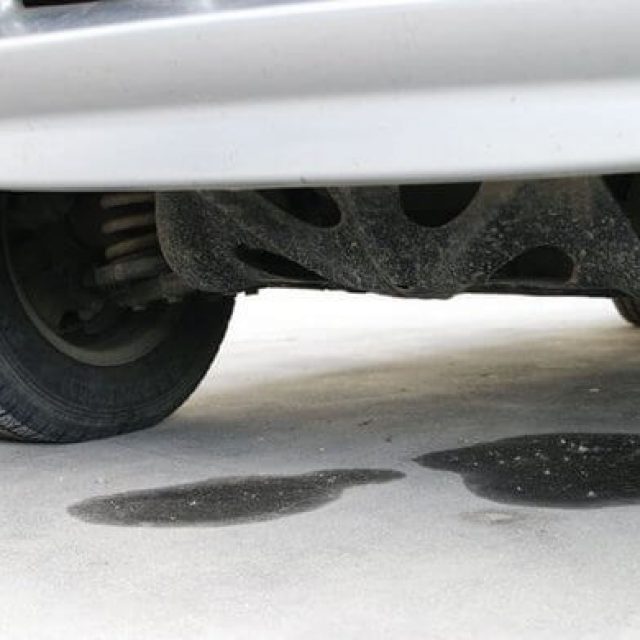 If the vehicle is equipped with a mechanical (manual) transmission, it is necessary after long-term parking look under the car and see if any grease has leaked from the transmission. A similar problem may be present if the bearing is badly worn, as a result of which the lubricant is thrown into the clutch basket, from where it flows under the car. If there is a similar problem, the bearing must be replaced.
If the vehicle is equipped with a mechanical (manual) transmission, it is necessary after long-term parking look under the car and see if any grease has leaked from the transmission. A similar problem may be present if the bearing is badly worn, as a result of which the lubricant is thrown into the clutch basket, from where it flows under the car. If there is a similar problem, the bearing must be replaced.
Automatic transmission
The situation is much more complicated if the smell of burnt oil is in the interior of a car with an automatic transmission. If such a problem occurs, it is most likely due to severe wear of the gearbox components and their overheating, due to which the oil burns, which leads to smell in the cabin. In such a situation, you need to check the car with a diagnostic scanner so that specialists can determine the cause of the malfunction.
With an unpleasant smell in the passenger compartment, any driver can face. Sometimes the smell of burnt oil can be felt in the cabin. This situation must be warned, as this indicates problems with the engine. In addition, the smell of burnt oil is extremely harmful to the human body. The use of flavors of various flavors will help muffle bad smell but they won't solve the problem completely.
The smell of burning in the car interior may occur after recent work on changing oils and fluids in the engine compartment. Photo: okeydrive.ru
Where does the smell of oil come from in the cabin
In order to calculate the source of a harmful odor, it is necessary to inspect all lines and connections through which technical fluids flow. More likely there was their deformation, destruction and leakage. You also need to check the oil level in the engine and gearbox for its excess.
Burning smell from the engine compartment
Often the source of unpleasant odors in the car interior is engine oil, which penetrates inside from the ventilation system. When the engine overheats, the oil begins to burn and an unpleasant odor is released that enters the cabin. Another reason for the smell is the lack of engine oil. But the most common problem is gasket leakage. valve cover or block gaskets. This is usually due to wear and tear of components and system malfunctions.
Not less than serious problem, leading to a burning smell in the car - blockage, damage to the hose and pipes. In addition, it is important to study oil seals. Their wear leads to leakage, which causes unpleasant burning smell. This leads to the fact that depressurization occurs in the system and harmful fumes from burning oil enter the passenger compartment.
Therefore, it is necessary to carry out timely service engine and be attentive to details, avoid damage to the breather, hoses and pipes, and also monitor the level and temperature of the engine oil.
Sickening smell of burning
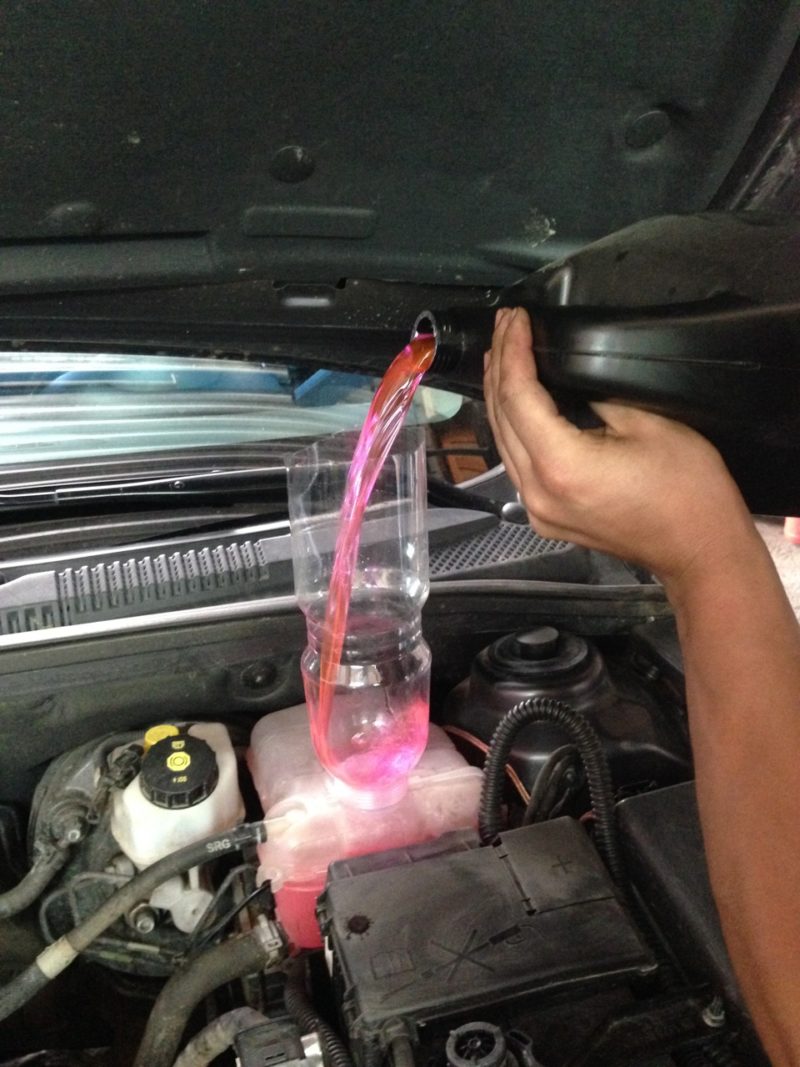
The cloying smell in the cabin is most likely the smell of antifreeze. Photo: d-a.d-cd.net
The sweetish smell of antifreeze may indicate that the lines through which this technical fluid flows may be damaged. Most likely, there is an antifreeze leak. First, you need to determine the temperature of the engine. If it is very high, then the motor was prone to overheating, which caused it to boil. At normal temperature, you need to carefully examine the radiator, the function of which is cooling the system. Antifreeze leakage can be extremely small. However, it is still necessary to contact auto mechanics.
There is a special liquid substance for blocking cracks. It is added to the radiator and helps prevent all leaks and produce bad odors in the car interior.
Smells like oil after repairs and fluid changes

Carry out the replacement of technical fluids and other work, should be extremely careful. Photo: club-motors.ru
Simply changing or adding engine oil can cause a burnt oil smell. After the oil has been poured into the motor neck, it is important to inspect it and everything around it for the absence of technical fluid residues. Remaining drops and streaks of oil can become a source of an unpleasant odor until it burns out. Therefore, after carrying out work on replacing / topping up the oil, it should be carefully poured and the places wiped from the remaining drips. This is especially important when replacing oil filter, removal provokes the inevitable copious release of used oil into engine compartment.
We are looking for a reason
To combat the smell of burnt oil entering the cabin, it is necessary to examine all places engine compartment, which hosted recent repair work. The result of this process will be to determine the location of the oil leak or damage.
A visual inspection of the engine compartment can not always clearly determine the source of the smell. This may be the reason for contacting the station Maintenance where diagnostics will be carried out by professional auto mechanics.
It is important to indicate how often the smell appears when it becomes sharper - at high or low revs whether its appearance is related to the operation of the stove.
What to do when you smell exhaust
The resulting burnout in exhaust system It may not produce fumes. Subsequently, they enter the cabin and lead to unpleasant "aromas" of burnt oil. That is why, it is necessary to regularly pay attention to the exhaust system. It is important not to bring it to such a state when in the muffler, resonator or catalyst through holes. Exhaust carbon monoxide, which enters the interior of the car, has an extremely negative effect on the human body. An excess of carbon monoxide inside the car can cause dizziness and loss of consciousness in the driver and passengers. In this case, you must immediately go to a car service to professional auto mechanics.
The smell of burning in the cabin from the checkpoint
The engine compartment of a car is not always a source of unpleasant burning smells in the cabin. Usually transmission odor makes itself felt constantly - both during the movement of the car, and on the spot. Burning smell emanating from mechanical transmission , may indicate that the bearing has severe wear. This causes oil from the gearbox to enter the clutch basket.
This problem can also be identified by the remaining drops of oil from the checkpoint and clutch area in the parking space.
Automatic transmission. Technical device The machine is much more difficult than the mechanics. It is difficult to self-diagnose. That is why it is worth contacting a computerized car service. The specialist will help to identify certain problems that arise with the automatic transmission. Usually they occur due to wear of components or lack of oil in the transmission.
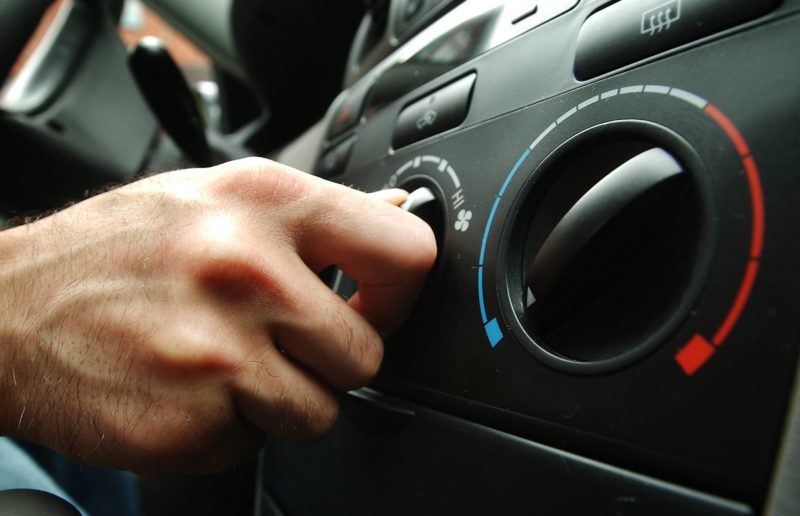
The occurrence of a sharp and unpleasant smell in the cabin is common in early spring - when snow and ice melt. Photo: 1gai.ru
Interior smells like chemicals
The problem is not in a faulty system of the engine, transmission, but in getting chemical compositions on exhaust system components. Since the roads are treated with various chemicals, they end up on the bottom of the car and on the exhaust system in particular. As a result, incomprehensible pungent odors appear in the cabin.
Smell of burnt wiring
Sometimes the smell of seemingly harmless burnt oil can be confused with one of the most dangerous - the smell of burnt wiring. It occurs in violation of electrical system car. This pungent smell may be accompanied by smoke that goes into the car interior. In this case, you need to immediately stop, turn off the ignition and remove the terminals on the battery. Problems with electrical wiring jeopardize, like a car that can simply burn out, but also the lives of passengers and the owner of the vehicle.
Burnt clutch smell
A burning smell in the cabin occurs when the disc and clutch basket wear out. It is slipping. This prevents the vehicle from moving dynamically. This reason needs to be checked with computer diagnostics at the service station.
Detailed information about the clutch and how it is “fired” is in this video:
Outcome
The comfort of movement, both the driver and passengers, depends on the condition of the car interior. That is why it is important to quickly decide what to do with the unpleasant and harmful smell of burnt oil in the car. After all, this can indicate a number of malfunctions: the engine, gearbox or exhaust system.
There are times when a comfortable environment in the car is violated extraneous sounds or smells. Such phenomena require increased attention, because they often indicate a malfunction in the systems. One of them common problems- the smell of burning oil.
Why does my car smell like burnt oil?
In order for the smell of burnt oil to appear in the cabin, it first of all needs to come from somewhere - to leak, to be spilled, etc. The second condition is that the oil must get on hot surfaces. Only then are vapors and fumes formed, which can get into the air entering the cabin. There is another option - the leakage of oil combustion products from systems for which this is a natural process.
The main sources of the smell of burnt oil, the reasons for its occurrence and how to eliminate them.
Guided by the previously given simple considerations, you can quickly find the sources and causes of the appearance of an unpleasant smell in the cabin and, of course, think about ways to eliminate them.
1. Performance of work on repair, replacement of technical fluids and materials.
For recent work, work should be shown Special attention. It is enough to pour oil on the oil filler neck, carelessly remove the oil filter when replacing (splashing it on the engine housing or exhaust tract), touch, violating the quality of fastening, the pipe of the crankcase ventilation system - and the smell of burnt oil in the car is provided.
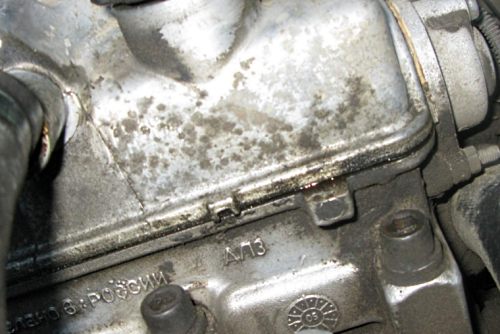
To find out and eliminate the cause of the unpleasant odor, you should carefully examine all the nodes on which the work was carried out, and all the space surrounding them. It is necessary to check around all the hoses and pipes, their connections. With a high probability, the place of contamination or leakage will be found.
If the inspection did not give results, you will have to move on to searching for more serious reasons. Some help in diagnosis (at least in localization) can be provided by monitoring the time and frequency of odors. For example, its constant presence may be due to problems with the transmission, and the appearance only when driving, turning on the fan or stove indicates a source in the engine compartment.
2. Engine.
Most often, engine oil burns. If even a tiny amount of it gets on the hot engine case, it will affect the air in the cabin - the air intakes of the ventilation system are located above the power unit.
If a replacement was made, go topping up the oil, first of all, inspect the oil filler neck and the space around it. If streaks are found on the engine housing, the place of contamination is carefully rubbed. Otherwise, the smell in the cabin will remain for 4-7 days - until the oil burns out completely.
Do the same when you change the oil filter. It is almost impossible to remove the old one without a few drops (and more often a solid portion) of oil into the surrounding space. hit on the engine, exhaust pipe, the catalyst, if you do not notice it and do not try to remove the pollution, will report itself with a characteristic smell.
Overheated engine oil can also be a source of odor. Reasons for this:
- low level oil in the crankcase;
- engine overheating.
The smell may not appear if there are no leaks in the system. But the situation is serious enough. The oil burns, deposits accumulate on engine parts, and the operation of systems is disrupted.
Overheat power unit- a topic for separate consideration. There can be many reasons for it, and each requires its own approach to diagnosis and elimination.
An insufficient oil level in the crankcase is easy to notice - you just need to use the dipstick every morning.

You should not rely on the indicators of devices that work when the oil pressure drops. light bulbs on dashboard(in old carbureted cars) are also not eternal, and oil pressure sensors can fail.
If the dipstick test shows insufficient level oil in the crankcase - it needs to be topped up. And at the same time ask questions, how long ago this happened last time, is the engine oil consumption high, what are the reasons for this?
There will be a smell when oil leaks onto the power unit housing due to:
- damage to gaskets caused by wear and aging of the material, malfunctions of systems;
- leaks through seals.
Most often, the valve cover gasket burns out and leaks (accompanied by an increased level of oil consumption), somewhat less often - gaskets of other blocks and mechanisms. You can find a malfunction by oil drips on the engine housing (drops can remain under the car after parking).
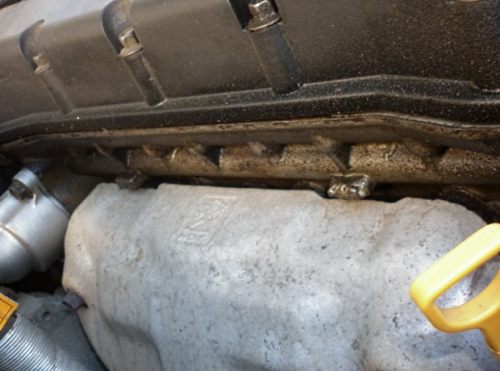
To solve problems, a thorough inspection is required, if a leak is found -.
TO common reasons the smell of burnt oil becomes a problem with the crankcase ventilation system:
- clogging or damage to the valve (breather);
- poor-quality fastening or cracks in hoses and pipes;
- malfunctions in the operation of other parts of the system - oil separators, pumps (in forced ventilation systems), etc.

As a rule, this leads to depressurization of the system and the ingress of vapors from the crankcase into the engine compartment (they contain products of oil combustion in the engine cylinders, which causes smell) or oil drops on the unit body. Clogged passages lead to an increase in pressure in the crankcase and cylinders, which can lead to gasket extrusion and leakage, which will also be accompanied by the smell of burnt oil.
Requires careful visual inspection damage parts (breather and hoses are easy to install visually), flushing or replacing parts if deposits accumulate inside.
3. Transmission.
A constant smell in the cabin can indicate problems in the gearbox:
- In the mechanical high degree bearing wear and extrusion gear lubricant into the clutch basket. Additional feature- oil leakage from the clutch basket area onto the road during parking. Requires bearing replacement to fix.
- In automatic - wear of parts accompanied by heating and low level transmission oil. Diagnostics and Troubleshooting on your own- the task is difficult. It is better to conduct testing on computer stands, and for repairs use specialized equipment available in service centers.
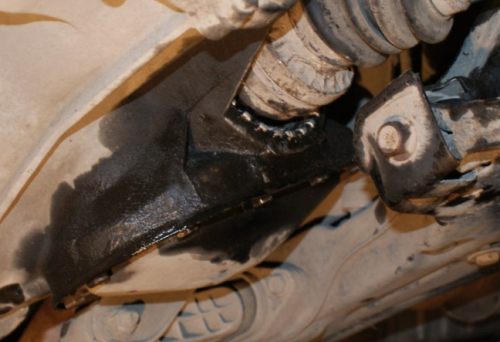
For your information! The smell of burnt gear oil is different from the smell of burnt engine oil.
4. Other sources.
The source of the smell of burnt oil may be an exhaust system in which a burnout has occurred. It is into it that the exhaust gases of the engine are sent, which contain, among other things, the products of oil combustion.
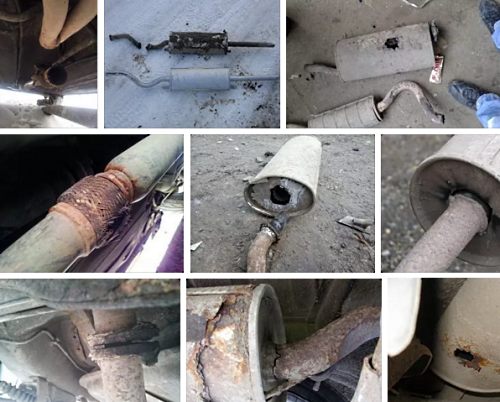
But even with its serviceability and integrity, an unpleasant smell in the cabin can appear if road chemicals or other substances get on the details of the exhaust systems. Typical example complaints of motorists about the smell in the cabin during the spring snowmelt.
On specialized resources there are other posts on this topic.
The smell of burnt oil in the cabin - the stories of practitioners.
Alexey, Kazan:
I have a Volga Cyber, recently there was a smell of burning in the cabin. There is no smoke under the hood, all surfaces are clean. They gave me a lot of advice and I replaced the crankshaft seals, the cylinder head gasket, the gasket on the exhaust manifold. Nothing helped. Then I drove to the service, they looked from below. I have a mechanic - the clutch is all in oil, and the bottom of the box too. It looks like it sprayed on the exhaust, that's where the smell comes from. Disappeared after repair.
Nikolai, Gorky:
The Volkswagen Polo Sedan is an interesting phenomenon. In winter. With the stove turned on, as soon as I stopped at a traffic light, a burning smell appears in the cabin. They tried to convince me that the radiator was leaking in the stove, that it was the smell of carbolite parts of the electric motor, etc. Until a person was found in the service, he said that the typewriter has such a feature. (moisture puddles, snow), gets on the catalyst, and it is next to the internal combustion engine. When you stop, it all draws the stove into the cabin, while driving - it blows away this cinder.
Vasily, Tver:
I had a problem on the VAZ 2114 - when driving on high speed smelled of burnt oil in the cabin. Reset the speed - the smell disappears. My father-in-law gave me advice - he says that there are only 2 ways to have such a smell - the oil burns in the cylinders, the exhaust is leaking, or from somewhere it presses on hot parts, most often on the exhaust tract. The exhaust was clean, so I discarded the first one. And then he began to change gaskets and seals, and got rid of it.
Pavel, Yaroslavl:
That's what I encountered on the Chevrolet Niva. At high revs- The smell of burnt oil in the cabin. The reason for this is the mounting bolt of the tensioner drive belt. It's simple - it is not sealed, but is screwed into the cavity where the timing chain sprays oil. It flows drop by drop, hits the engine and burns. The way out is simple - screw it onto the sealant (it is clear that the path is one-time - unscrew it, smear it again).
Video.







